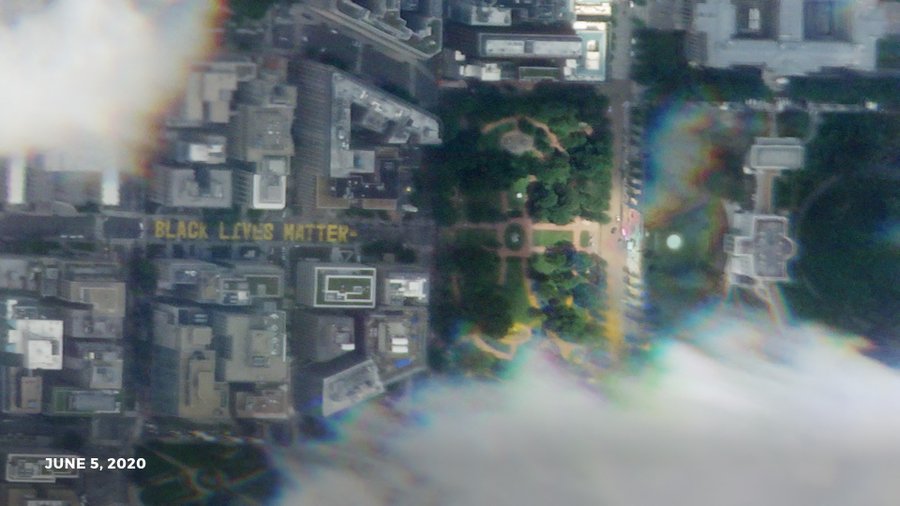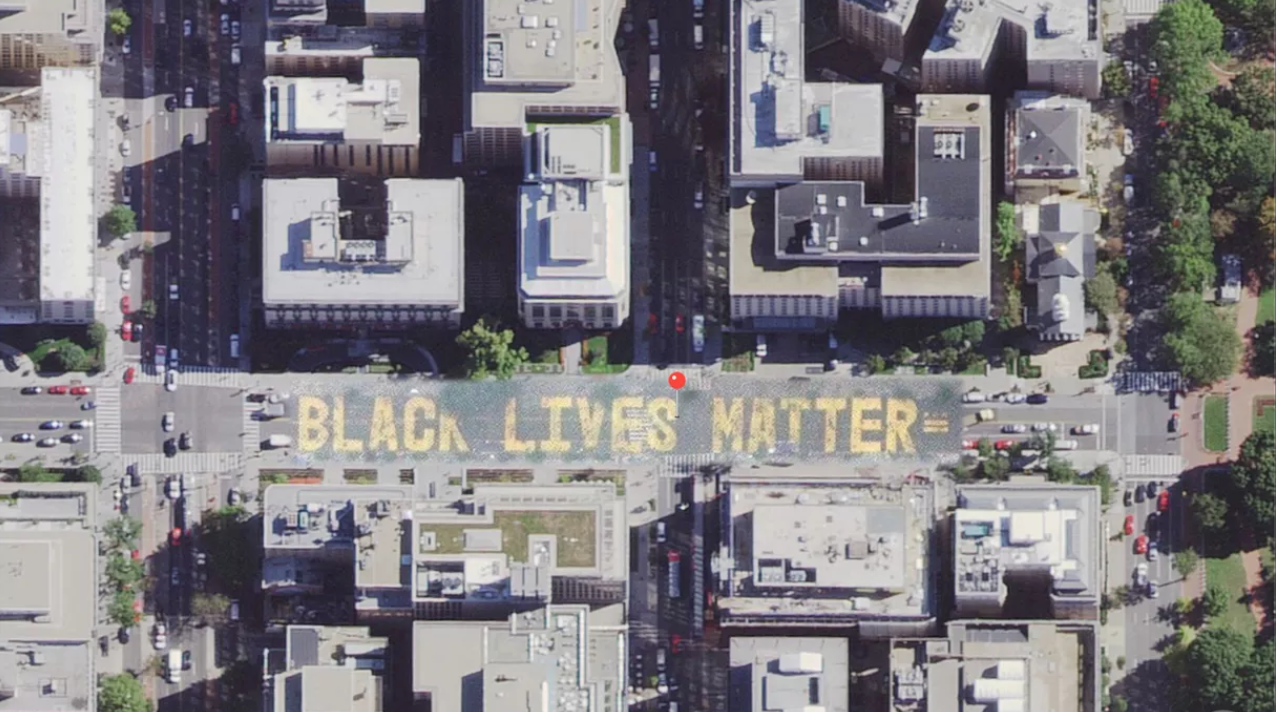
Apple, Google, Bing update Maps to show ‘Black Lives Matter Plaza’
No sooner than Washington DC Mayor Muriel Bowser had renamed a street near the White House as ‘Black Lives Matter Plaza’, tech giants Apple, Google, and Microsoft scrambled to reflect the change in their navigation apps.
On June 5, 2020, the Washington DC Department of Public Works painted a mural to show solidarity with Americans protesting police brutality since the May 25 death of George Floyd at the hands of Minneapolis police.
The words ‘Black Lives Matter’ were painted in capital letters across 35 feet, along with the flag of Washington DC, as part of the George Floyd protests. Earth observation company Planet’s SkySat satellite captured the bright yellow message from space:

Courtesy: Planet
The same day, Mayor Bowser officially renamed the street to Black Lives Matter Plaza. Within hours, both Apple and Google relabeled 16th St NW as Black Lives Matter Plaza in their Maps products. Microsoft’s Bing Maps followed suit.

Google Maps screengrab
Apple, then, went a step further to update the satellite imagery also in its Maps to reflect the new mural.

Apple Maps screengrab
The change was first pointed out on Twitter by a sharp-eyed app sleuth who suggested that the update looked like a quick-fix:
I like how Apple Maps only patched this part of the satelite image for Black Lives Matter Plaza
(notice how the cars partially fade out at the edges, and that this part is noticeably grainy than the rest) pic.twitter.com/lXIGf5AKOj
— Jane Manchun Wong (@wongmjane) June 8, 2020
In fairness, satellite data can actually be several years old in mapping apps. (See: How often do Google Maps get updated?) You cannot expect them to show real-time images.
Either way, the quick updates by Apple Maps, Google Maps, and Bing Maps are a clear testament to the growing support for the Black Lives Matter movement. And we hope it continues that way.






